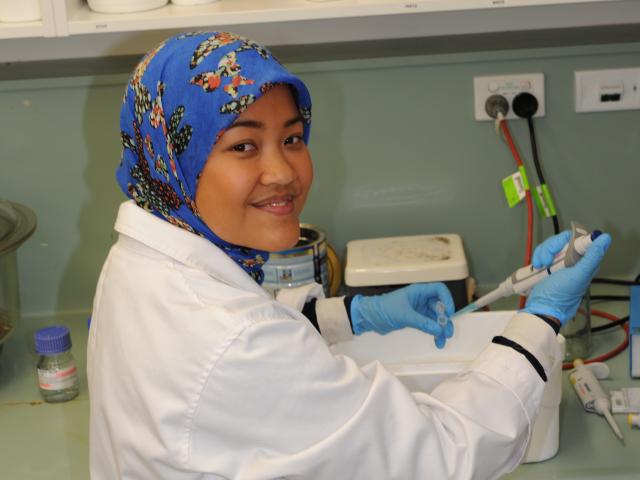The evolution of oxygen during budburst
As part of the efforts to improve the Australian grape industry, researchers at UWA have been studying the factors influencing budburst. A PhD student in Dr Considine’s group, Karlia Meitha, studied the physiological and genetic regulation of buds at the earlier stages of burst in relation to their tissue oxygen status and light perception.
The timing of budburst is determined by a balance of external environmental cues and internal processes, and is a major determinant of other events such as flowering during the growing season. The management of budburst is often problematic in the areas with warmer winter and abnormal seasons.
The expensive and laborious application of phytotoxic chemicals such as hydrogen cyanamide is commonly performed to force budburst. Thus, the objective of her research was to improve the knowledge in biological processes of the buds responding to seasonal cues. This knowledge will then enable us to develop a more environmentally friendly method of budburst management.
The conditions of light and temperature have long been proposed as the main environmental cues that trigger the onset and release of bud dormancy. However, the signaling events during these stages are still unclear, as are the direct consequences of abnormal seasonality, such as those forecast in climate change scenarios.
Mrs Meitha’s research found that tissue oxygen status is important in curating stress-dependent processes in buds during the initiation of burst. Her results showed that the condition of tissue oxygen in the sensitive meristem area of the buds were very low (hypoxic) and gradually increased as the buds progressed to burst.
This gradual increase of tissue oxygen status is complemented by the shift of reactive oxygen species (ROS) within the bud, implicating oxygen and ROS in key developmental functions. These data were supported by gene regulation, which highlighted a prominent role for the chloroplast, even though the buds remained tightly enclosed and apparently protected from direct light.

Mrs Meitha’s research was submitted for publication and her PhD thesis is currently under examination. Her work provides a platform for other current and future students to more fully explore the dynamics of bud activity throughout the year and in conditions of climate stress.
This research was funded by the Australian Research Council (LP0990355, DP150103211), with financial support from DAFWA. Mrs Meitha’s scholarship was supported by an Australia Award Scholarship and a Wine Australia travel grant.
Further information on this study is available from Karlia Meitha and Michael Considine.
